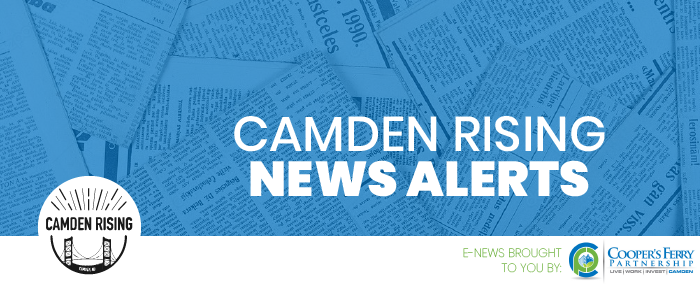Cooper University Health Care is proud of the ongoing transformation of Camden, our hometown for more than 130 years. Therefore, we are pleased to share the message below from Cooper’s Ferry Partnership highlighting how dedicated teachers, education leaders, community advocates, and investments in the city’s schools are changing the lives of Camden’s students.

NEWS ALERT: Camden Schools Make Measurable Progress
We are witnessing a palpable, unprecedented turnaround in Camden schools. Thanks to our education leaders and residents, we have seen highly dedicated teachers focus their efforts on ensuring Camden kids succeed, as well as advocacy and the delivery of $465 million in investments to improve neighborhood school buildings. Now, thanks to a recent Stanford University report, we can confirm the changes are objectively improving the lives of our kids. Below is an excerpt of a Star-Ledger editorial, an op-Ed from Camden School District Superintendent Katrina McCombs, and a map showing investments in neighborhood schools.
Against All Odds, Camden Schools Make Big Strides
The Star-Ledger and NJ.com
July 21, 2019
An old, stubborn myth that poor kids can’t achieve in school has been disproven, yet again: First in Newark, and now, with serious progress in Camden.
Last year, for the first time ever, the low-income, mostly minority kids in Newark charter schools beat the state’s average scores in reading and math in grades 3-8 – incredible, given the far more affluent pool of kids they were competing against.
And according to a new study out of Stanford University, the Camden schools revamped under charter management are now starting to close the gap. They remain well behind state averages, but they are making faster gains in reading and math.
 Gov. Phil Murphy, a charter skeptic, is expected to issue a report on their impact in September: He can start by noting this inspiring success.
Gov. Phil Murphy, a charter skeptic, is expected to issue a report on their impact in September: He can start by noting this inspiring success.
About 58% of kids in Camden now attend schools run by charter operators, including Uncommon, KIPP and Mastery. And while the district schools aren’t making such large gains, they don’t seem to have been hurt by reform: They are also steadily improving.
This is great news, from the independent researchers at Stanford’s Center for Research on Education Outcomes (CREDO). It would have been unthinkable ten years ago, when Camden schools were horrifyingly bad, in chronic turmoil and disrepair, with proficiency rates stuck in the single digits.
As recently as 2014, before reform took hold, as few as 4% of kids were proficient in math – a number that has now more than tripled, citywide. And in one of the poorest cities in America, one charter-managed school is now matching the state’s average scores in math.
McCombs: Stanford Study Highlights Progress Made Under State Control
Cherry Hill Courier-Post
July 16, 2019
A comprehensive study completed this month by Stanford University underscores the progress and gains of all district students over the past five years. In fact, the Stanford study found that between 2014 and 2017, district school students gained the equivalent of an additional 35 days of learning in reading and an additional 135 days of learning in math each year. These gains place students in district schools on an accelerated path towards proficiency, and they should be celebrated.
The Stanford findings on improved district growth align with data we are collecting in classrooms each day. This year, 56% of students met their reading and math targets. In reading, we saw a 22% decrease in students needing intensive intervention and a 12% increase in students reading on or above grade level. In math, there was a 28% reduction in students needing intervention and a 13% increase in students measuring on or above grade level. Let me be clear, we are not yet where we want to be. Still, these trends are worth celebrating, as the road to success begins with growth and progress.
Rebuilding Our Schools
Camden’s test scores aren’t the only thing going up around here —so is the quality of our school buildings themselves. From 2009 to 2019, an incredible $465 million was invested in building and renovating no fewer than 14 neighborhood schools across the city, from Centerville to Whitman Park to Cramer Hill.

